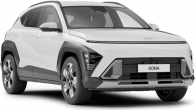City types can venture off-road in Subaru’s high-riding wagon.
New
The idea of a high-riding station wagon with limited off-road capability seemed a clever one when Subaru introduced the Outback. After all, not everyone wanted to go serious bush-bashing and most SUV buyers really wanted the high-driving position afforded by SUVs.
Based on the mid-sized Liberty wagon, the Outback gave them extra ride height, specific suspension tuning, different wheels and tyres and some tweaking of the electronics in the anti-lock braking and diffs.
It seemed the ideal option for city dwellers who wanted to tour the bush in comfort.
In common with earlier Outbacks, the fourth-generation model in 2009 was heavily allied to the Liberty.
The Outback was longer and wider than the previous model, with a longer wheelbase. With its increased dimensions came extra interior space, particularly for rear passengers.
The main differences from the lower-riding Liberty were its high ride height, some extra body cladding to protect it from the bumps and scrapes that inevitably come with a bush life, and some new bumpers to add to the differentiation.
The new Outback sat 70mm higher than the Liberty, which gave it 13mm more ground clearance for going beyond the black top.
Mechanically, the Outback differed from the Liberty with its revised suspension setup to suit the higher ride height and off-road use. Its wheels and tyres were more suited to its intended use.
There were three engine options: an economical 2.5-litre four, a zippy 3.6-litre six and a 2.0-litre turbo-diesel fuel-miser, all in boxer configuration.
Buyers of the turbo diesel were initially lumbered with a six-speed manual gearbox and in 2013 got the option of a constantly variable transmission. Those going for the petrol four had the choice of the six-speed manual or a CVT and those opting for the 3.6 got a five-speed auto. Drive was, of course, through all four wheels all the time.
One downside in a vehicle ostensibly designed with bush use in mind was the temporary spare wheel.
In 2012 Subaru added to its already impressive safety arsenal by releasing EyeSight crash mitigation. Electronics monitored what was going on around the car and overrode brakes or throttle to avoid a potential crash. It came standard on Premium models with petrol engines.
Now
The Outback is a sound design and little goes wrong with it. However, it’s a good idea to check it for damage from being used off-road, particularly by an owner who has tried to push it beyond its reasonable limits.
It’s worth getting the car up on a hoist so you can get a decent view of the underbody for telltale signs of bush-bashing.
Also check for oil and coolant leaks around the engine, and make the usual check of the car’s service record. Servicing is scheduled at intervals of 12,500km. The timing belt on the 2.5 has to be replaced at 125,000km or five years.
When test-driving a car equipped with the CVT watch for any signs of hesitation, surging or harshness. In the six-speed manual take particular note of any reluctance on the 2-3 shift.
Owners report that it can be difficult to make the 2-3 shift without holding the clutch pedal in for a relatively long time. Without doing that the transmission can baulk instead of smoothly going into gear.
Subaru Outback 2009: 2.0D
| Engine Type | Diesel Turbo 4, 2.0L |
|---|---|
| Fuel Type | Diesel |
| Fuel Efficiency | 6.4L/100km (combined) |
| Seating | 5 |
| Price From | $3,190 - $4,950 |
| Safety Rating |
|
Verdict
Smithy says
Good on road and off, without the bulk of a regular SUV.
Owners say
Warwick Allen: The 3.6R is brilliant. I love the performance, the agility on twisty roads, the CVT is great and it’s comfortable.
Barry Dobson: I highly rate my 2011. It won’t burn off the hoons with the CVT but it’s great for economy. I like the ground clearance and the AWD works well in snow.
Hillary Atkinson: We bought our 2010 2.0 diesel because we live in the country and wanted a car that was safe on dirt roads. We love it. It’s comfortable, quiet, economical, powerful and amazing on slippery roads.
Nancy Billings: We have a 2012 2.5i. It has great legroom front and back and a spacious boot. We like the traction with all-wheel drive; it handles dirt roads and sand very well.
Jim Adams: I’m disappointed with my 2010 Outback, which has had some annoying problems. There was an intermittent rattle in a vent that took a long time for the dealer to fix but the most annoying is the crunch when changing from second to third in the six-speed manual gearbox if you don’t hold the clutch in for at least three seconds. It’s a slow synchromesh problem but Subaru tell me it’s normal.
At a glance
Price new: $40,490 to $55,990
Price now:
2.5i - $14,000-$28,000
2.5i Premium - $16,000-$31,500
2.0D - $15,000-$32,000
2.0D Premium - $16,500-$34,500
3.6R - $16,500-$35,500
3.6R Premium - $19,500-$37,500
Safety: 5 stars
Engines: 2.0-litre 4-cyl turbo diesel, 110kW/350Nm; 2.5-litre 4-cyl, 123kW/229Nm; 3.6-litre 6-cyl, 191kW/350Nm; all boxers
Transmissions: 6-speed man, CVT, 5-speed auto; AWD
Thirst: 6.4L-10.3L/100km
Also consider
Kia Sorento 2009-10 - 4 stars - Applauded for its value-for-money and on-road manners. A must-see model if you’re shopping. Pay between $12,500-$40,000.
Hyundai Santa Fe 2009-14 - 3.5 stars - The Santa Fe ticks plenty of boxes when it comes to value-for-money. It’s also decent in all other areas. Pay between $12,500-$39,500.
Mitsubishi Outlander 2009-14 - 4 stars - A sound and reliable all-rounder that’s worth a look for families. Pay between $16,000-$36,500.
Coming up
Do you own or have you owned a Lexus GS300/430? Send comments to Graham Smith at grah.smith@bigpond.com or write to CarsGuide, PO Box 4245, Sydney, NSW 2010.
Click here to see more Subaru Outback pricing and spec info.
Pricing Guides

.jpg)
.jpg)
.jpg)
.jpg)
.jpg)
.jpg)

.jpg)

.jpg)







.png)









.jpg)


.jpg)

